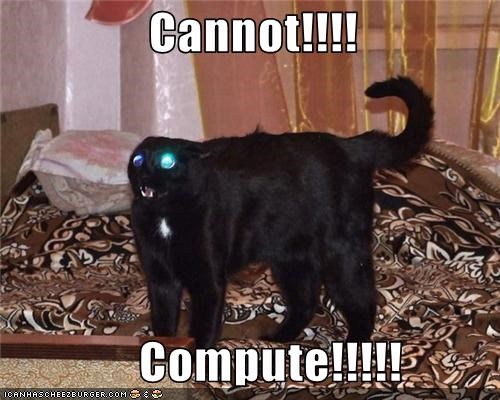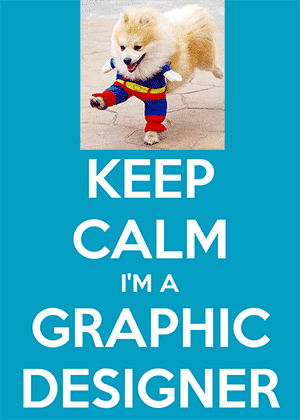Why Design Matters


I'm a realist. I'm a left-brained, analytical, slightly cynical realist and if I can't see it, it doesn't exist.
That's why for the first 5 years of my career in this business I never pushed good design as being all that important. I started in this business designing really cheap websites. I told my clients you had to have a "good enough" design. I did a lot of template customizations when I started. It was easy, relatively inexpensive for the client, and in the end, the site looked pretty decent.
Over time I started to learn. I started to see what a dramatic impact good design can have. I saw it over and over and over until it finally dawned on me…
I was wrong about design. Dead wrong. It took me about 6 years to realize it, but here's why I was wrong.
It's totally impossible to avoid. No matter what, you, me, your customers, your son, your wife, your dog, your neighbor's kid, every living being with eyeballs is making snap judgments based on appearance.
Those judgments are always a bit different; my girlfriend is drawn to products that have very modern, high-end looking packaging. To her that says quality. To me that says, "this costs more." Neither of us are necessarily right or wrong. The key detail is, which is more important to the purchaser? My shampoo cost $2…seriously. Hers was $15.
And everyone's different in different situations. I spend $2 on a bottle of shampoo, but when it comes to business I'm aware that I'm keenly affected by design.
I'm drawn to marketing materials with very high quality design. Why? Because in that case, quality is far more important than cost.
I could care less if my hair gets a few less vitamins; it hasn't fallen out yet and I don't expect it to anytime soon. In business the stakes are flipped; I care immensely about quality, about all the little details, because in the end those details make me money and make my clients money.
Which leads to the next point…
Better make sure it's the right message.
Want to sell me shampoo? Slap the most basic label on the most unassuming bottle and my eye will be drawn straight to it. Why? Because it speaks to what's important to me: in this case, price.
Want to sell me marketing software? That design better be near perfect; I mean, spend tens of thousands on your marketing materials…whatever it takes.
Hubspot understands this and it's one of the reasons they've single-handedly popularized the term, "inbound marketing." Look at all their marketing materials. Any idea how long it takes to do some of that stuff? The level of skill and design expertise to come up with something that's simple, pleasing to look at, and gets the message across all at the same time? It takes a long time. Know how hard it is to find talent that can consistently do that? Hard. Very hard.
The design of your marketing materials says something to your customers. Your business card says something to your customers, your employee uniforms say something to your customers. Hell, the design of your office or storefront is saying something to your customers.
Most people don't understand good design. Hell, most people don't understand design at all. I sure didn't; to some extent I still don't…that's why I work with great designers.
Design has many meanings, many different definitions. In marketing, we use communication design. We try to communicate something to our prospects and design is a tool that helps us communicate.
As marketers, a successful design is one that successfully communicates the message we want to communicate to our prospects and customers. But this is not possible if you don't fully understand your prospects and customers and craft a design that speaks to their unique personalities.
Design comes into play in every aspect of marketing communications. It's about the fonts and colors used on the website just as much as it's about the layout and architecture of the brick & mortar store. Design even makes it's way into the product itself. Design is a promise that the product fulfills.
Recently my girlfriend walked into Pinkberry and got a cup of their Cherry frozen yogurt. I tried it and my brain exploded…

It had a chemical taste to it. Their design suggests I should expect fresh, perhaps natural ingredients, and I get smacked in the face with cough syrup (sorry Pinkberry, you guys are awesome, but that Cherry flavor sucks). That experience is burned in my brain. The design made me a promise, and the product broke that promise.
Walk into a Whole Foods. Then walk into a Walmart. Both of these places serve similar purposes, but you feel completely different in Walmart than you do in Whole Foods. Whole Foods is saying, "Come, look at all our fresh produce, organic foods, and free range meats." Walmart is saying, "Come, look at all our low prices and enormous selection." You find dramatically different types of customers in each store.
I've noticed this thought process more than most, perhaps because as a marketer it's part of my job, but most of this happens on a subconscious level. If you walked into Whole Foods and found generic brand canned corn on the shelf and discount pricing stickers all over the place, it just wouldn't feel right. If they gave you plastic silverware at a nice restaurant, you'd think, "what the hell is this?!"
These are extreme examples but we're all constantly judging things based on how they look, how they feel, how they sound, etc, and we're comparing that to the design promise.
If you've studied marketing for more than a month you should know that you need to understand your customer. The better you understand your customer, the more likely your message will be in line with what they want. And whether you like it or not, design is an integral part of that message.
Unfortunately, most small businesses don't realize just how critical this is. They wing it. The successful ones just guessed right. The unsuccessful ones didn't.
Anyone who's done any design work at all has run into some comment along the lines of, "I asked my daughter, she's got a really good eye, and she thinks blah, blah, blah." This guy even drew a comic about it.
When people ask friends, relatives, neighbors, acquaintances, whatever, whether they like a design, it bothers me…a lot. Unless this person is perfectly representative of your target market, why on Earth do you care if they like the design? Hell, why do you even care if you like the design? Honestly, it doesn't even matter if your target market likes your design, strictly speaking. What matters is that your design conveys the right information to your target market.

Search for "graphic designer" on Google, Craigslist, or even better, try one of the freelancing sites like Freelancer or oDesk. You'll find an endless supply of people claiming to be designers. Thousands of them…hundreds of thousands of them. You can find designers that charge $50 for a logo design and you can find designers that charge $50,000 for a logo design.
Anyone can throw up a website or a Facebook page or even just bid on a project on oDesk and say they're a graphic designer, a web designer, a programmer, whatever.
A lot of small businesses hire the cheap designers. There's a big market for that. To some extent that's a good thing, otherwise people like me couldn't get started.
I was designing websites for $25 an hour back in the day. I was completely clueless. I'm not a designer and I never was, but for a while I played one in real life. I could put something together that looked ok, but no thought went into the psychology of the customer…the client and I were literally just creating things that looked somewhat appealing to us. The customer barely came into the equation.
I was just as naive as anyone else. I didn't have a clue about any of this stuff back then. I couldn't possibly understand why anyone would pay $5,000 for a website, let alone $15,000 or $50,000. I thought companies paying that much were making too much money and just looking for reasons to spend it. Boy was I wrong.
You don't have to. I'm not saying you need to hire Paul Rand to do your company logo. Start small with the understanding that design matters and that there's a whole lot more to good design than photoshop skills.
Know that you're never going to be perfect, but strive for incremental improvements. Budget time and money each month, whatever it is, toward understanding your customer, identifying low-hanging design fruit, and making things better.
If you're designing a website, make sure you and your design team have a strong understanding of your customer and craft a message that will resonate with that customer. It's certainly not easy, and it'll certainly cost you more than a couple grand, but you don't have to go nuts.
In fact, if you're smart, you can start by doing your own market research and hire a design firm that's capable of understanding that research and crafting a marketing message designed to speak to your target customer, you'll be way ahead of most of your competition. Of course that assumes you're not competing with P&G, in which case you better get creative.